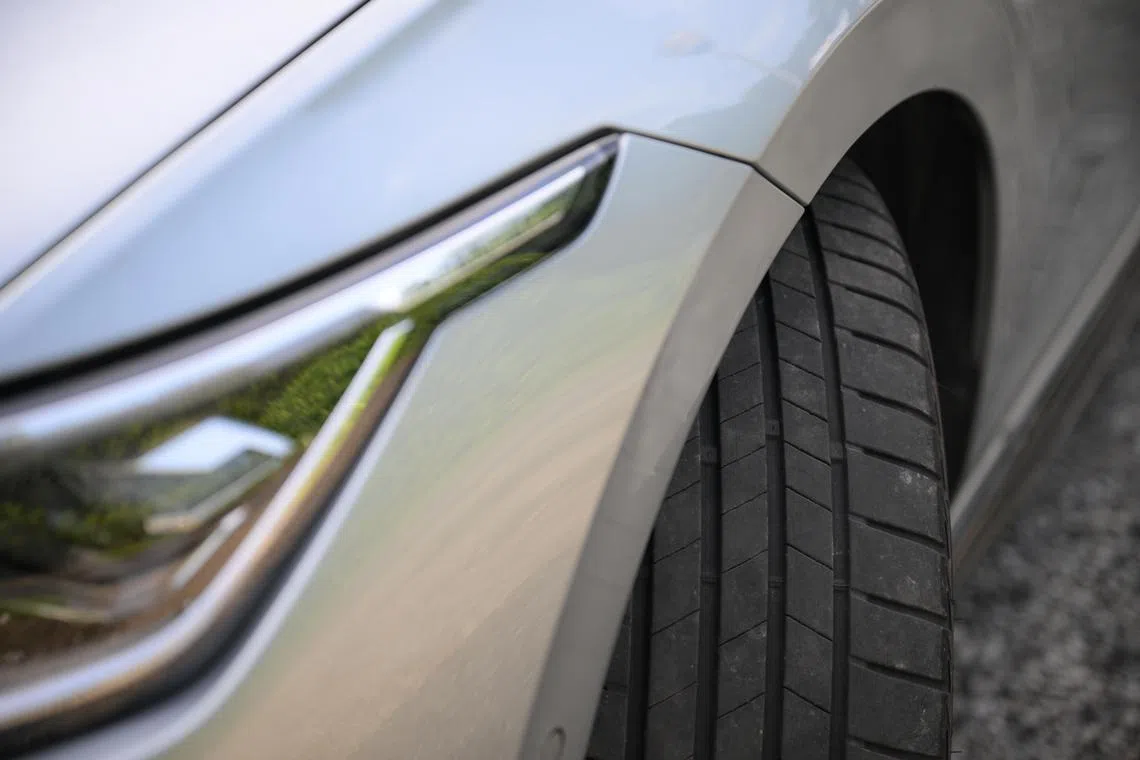Torque Shop: Symmetric, asymmetric and directional tyres suit different cars and driving styles
Sign up now: Get ST's newsletters delivered to your inbox

Different tyre tread pattern designs affect how they will perform.
ST PHOTO: MARK CHEONG
Follow topic:
Why are tyres categorised as symmetric, asymmetric and directional? How do I choose the best one for my car?
These three terms describe the pattern of the tyre tread. The different tread types are designed to suit different types of vehicles and driving styles.
Whether symmetric, asymmetric or directional, there are certain rules to observe when fitting tyres to wheels and mounting on the hubs.
As the name suggests, an asymmetric tyre has a tread pattern that is distinctively different across the two halves of the width. The reason for this is that during cornering, the outer half of a tyre experiences higher forces. In order to optimise grip, the asymmetric tyre’s outer treads are specifically designed to provide better grip and disperse more water.
Asymmetric tyres tend to be more expensive and commonly specified for high-performance cars. However, these tyres are also available in different sizes to fit a wide range of car models, and not just sports cars and supercars.
Symmetric tyres, which are more commonly available, have tread patterns that are repetitive and identical across either half of the width. They are designed for a wide spectrum of vehicles.
Most tyre models that claim to offer low road noise and minimum rolling resistance for better fuel economy are symmetrical in tread pattern. While they may not boast the ultimate grip in cornering – especially in the wet – when compared with asymmetric tyres, performance-oriented symmetric tyres are also readily available, usually at marginally higher prices.
With symmetric tyres, it is important to determine if any direction-of-rotation is specified. This is denoted by a small arrow on the side wall.
Although the tread pattern is symmetrical across the width, the grooves on uni-directional tyres are designed such that during forward motion, the tyre performs with optimum traction, anti-aquaplaning and water dispersion.
Incorrect installation will result in reduced grip, abnormal road noise and wayward behaviour in the wet.

